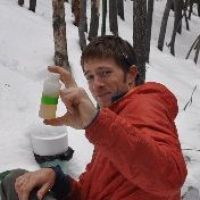Mills, et al.
Colloid mobilization and seasonal variability in a semi-arid, headwater streamMills, TJ, Anderson, SP, Bern, C, Aguirre, A, and Derry, LA
Mills, TJ, Anderson, SP, Bern, C, Aguirre, A, and Derry, LA (2017)
J Environ. Qual. 46 (1): 88-95
-
Boulder, GRAD STUDENT
-
Boulder, INVESTIGATOR
Abstract
Colloids can be important vectors for the transport of contaminants in the environment, but little is known about colloid mobilization at the watershed scale. We present colloid concentration, composition, and flux data over a large range of hydrologic conditions from a small watershed (Gordon Gulch) in the foothills of the Colorado Front Range. Colloids, consisting predominantly of Si, Fe, and Al, were present in most stream samples but were not detected in groundwater samples. Mineralogical and morphological analysis indicated that the colloids were composed of kaolinite and illite clays with lesser amounts of amorphous Fe-hydroxides. Although colloid composition remained relatively constant over the sampled flow conditions, colloid concentrations varied considerably and increased as ionic strength of stream water decreased. The highest concentrations occurred during precipitation events after extended dry periods. These observations are consistent with laboratory studies that have shown colloids can be mobilized by decreases in pore-water ionic strength, which likely occurs during precipitation events. Colloidal particles constituted 30 to 35% of the Si mass flux and 93 to 97% of the Fe and Al mass fluxes in the <0.45-µm fraction in the stream. Colloids are therefore a significant and often overlooked component of mass fluxes whose temporal variations may yield insight into hydrologic flowpaths in this semiarid catchment.
Citation
Mills, TJ, Anderson, SP, Bern, C, Aguirre, A, and Derry, LA (2017): Colloid mobilization and seasonal variability in a semi-arid, headwater streamMills, TJ, Anderson, SP, Bern, C, Aguirre, A, and Derry, LA . J Environ. Qual. 46 (1): 88-95. DOI: 10.2134/jeq2016.07.0268
Explore Further


